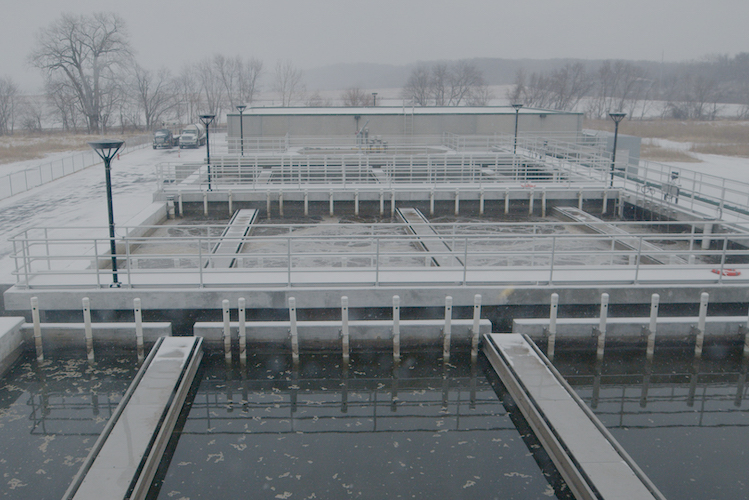The United States Environmental Protection Agency (EPA) Clean Water Act has been the catalyst of many major wastewater infrastructure improvement projects throughout the country. However, during the COVID-19 pandemic in 2020, new challenges emerged limiting the ability to effectively implement necessary improvements for utilities with negotiated consent decrees. Therefore, collaborative delivery is becoming more prevalent, providing schedule acceleration, team collaboration, and cost certainty for utilities experiencing challenges realized during the pandemic.
The Unified Government of Wyandotte County and Kansas City, Kansas (UG) continues to implement the next 25 years of the approved $1 billion consent decree. Like many utilities, it is seeking effective strategies for maintaining the program schedule and estimated project budgets as it faces increased lead times, cost fluctuations, and overall market uncertainties. The UG began implementing new delivery methods prior to the pandemic, including construction management at-risk (CMAR) for the Wolcott Wastewater Treatment Plant Improvement Project and the Armourdale Industrial District Pump Station Improvement Project. Through these projects, the UG has realized the many benefits of the CMAR method, including increased team collaboration, project cost certainty, and improved procurement processes.
Jessica Adams-Weber (HDR) and Scott Phillips (Garney Construction) recently conducted an interview with the project team to gain insight into some of the tangible benefits the UG has realized through its recent CMAR procurements. The team members consisted of Joe Barnes, UG Project Manager, Brandon Coleman, HDR Associate Vice President and Project Manager, and Jared Keating, Garney Construction Project Manager.
SCOTT: Joe, let’s talk about some of the financial aspects of your CMAR experiences. What have you learned?
JOE: Well, first, the real-time budget and guaranteed maximum price (GMP) development was an eye-opener. It put us in the driver’s seat. We were able to track the financial cause and effect of various design and equipment decisions that needed to be made. For instance, some of us wanted to see how incorporating a washer/compactor would affect the budget. We were quickly able to see the impact of the associated design, construction, and operations & maintenance (O&M) costs, which allowed us to make the best-value decision. Also, with the way our funding cycles work and the time frame we had to get the project completed, traditional design-bid-build (DBB) would have been an obstacle. By using multiple GMPs, we were able to capture/allocate funds in a manner that made the project affordable for us.
JESSICA: Brandon, following selection of the innovative wastewater technology during preliminary design, how do you think the CMAR process helped the UG ultimately implement this treatment method?
BRANDON: Representatives from the UG, HDR, and Garney visited active wastewater treatment plants currently using this technology. Under a traditional DBB model, we would have lacked feedback from the contractor’s perspective. Participating in visits with the contractors allowed the entire team to discuss constructability issues. Their insight and the dialogue provided the UG the comfort level it needed to believe that this was going to be a smooth installation, commissioning, and startup.
SCOTT: Joe, when you’re bound by a consent decree, schedule becomes even more critical. Tell us how the CMAR approach supports schedule certainty.
JOE: When we talk about project schedule, most people think about the time from when the first shovel hits the ground through project closeout. This doesn’t take into account the amount of time design, permitting, and approvals take, the advertising and bidding process that can’t start until the plans have been approved by all parties, and so on. With CMAR, you’re going through all the same steps that you would in a DBB project, but many are done concurrently versus consecutively. You don’t need to decide what ceiling tiles are going to be used in the break room before you start moving dirt. Now, more than ever, being able to get the design locked in on long-lead-time material and equipment so that it can be sourced before 100% design isn’t just important, it is absolutely necessary. CMAR is helping us mitigate supply chain issues.
JESSICA: Jared, what are some of the discussions you’ve had with the UG regarding the CMAR procurement process?
JARED: I’ve actually been told by Joe and others that after their experience with CMAR procurement it has helped streamline their standard procurement methods. It has helped them gain efficiencies, in both procurement and legal. We appreciated the engineering perspective from Brandon and his team reviewing each package in detail and providing the necessary technical expertise for selection.
JOE: Completely agree. We’ve gotten smarter; it’s made us think more critically about how we bid projects.
SCOTT: Joe, anything else before we wrap up?
JOE: Yes, another aspect that goes unnoticed sometimes is the community outreach effort. When the CMAR engages directly with the local contracting community to create awareness of the project, a lot of people benefit. We benefit by increasing competition on the bid packages, and we’ve formed new relationships with vendors and contractors that will pay off for the UG in the long term. Local contractors benefit by developing relationships with the CMAR through sharing their expertise, experience, and scope capabilities. It’s really a win-win.

